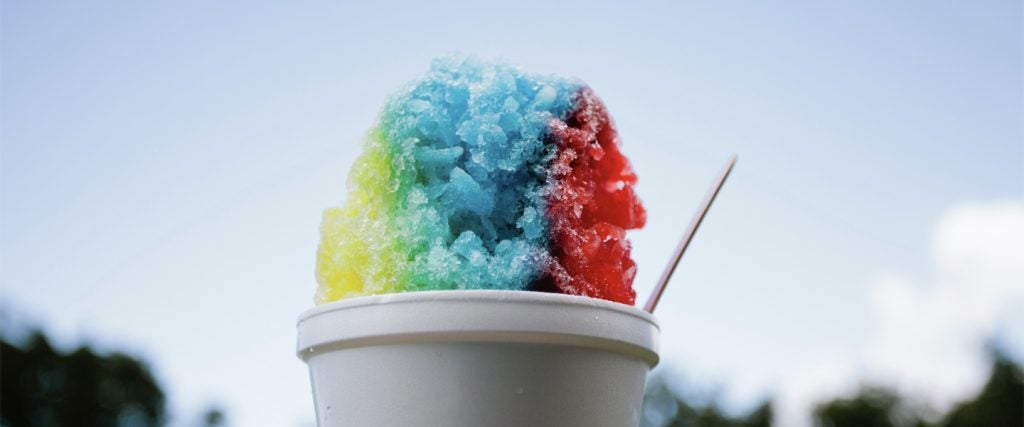Because the snow cones from my local ice cream truck tasted like cigarettes, it wasn’t until my friends and I could ride our bikes past the limits of our neighborhood that I first discovered shaved ice, which was sold out of a little white shack tucked behind a Save-A-Lot. Dubbed “Tropical Snow” (or “Trop-Snow” if you want to be cool), the colorful, syrup-laden shaved ice quickly became an addictive summer treat.
But aside from the fact that Tropical Snow didn’t offer any flavor combinations in the realm of stale cigarettes, what really is the difference between shaved ice and snow cones?
Shaved Ice vs Snow Cone: Ice
The first and perhaps most obvious difference between snow cones and shaved ice is the ice itself. As a veteran of “both the shaved ice and snow cone industries” and now general manager of the website Fast Food Menu Prices, Harland Adkins explains that shaved ice is “made from a machine that uses pressure to shave a big block of ice into very fine, light and fluffy ice — essentially snow.” Shaved ice has historical roots tracing back to early China and Japan, and is commonly believed to have been introduced to America by Japanese immigrants living in Hawaii.
Snow cones, meanwhile, are largely an American invention, composed of crushed ice rather than ice shavings. “With bigger chunks of crushed ice, snow cones have much more crunch to them than shaved ice,” Adkins says.
Shaved Ice vs Snow Cone: Flavor
The fundamental distinction between types of ice leads to larger, more complex differences between snow cones and shaved ice. For instance, while “flavored syrups or fruit juices are added to both, shaved ice actually absorbs the syrups because of its structural composition,” Adkins explains. “For snow cones, if they’re not pre-made, the syrup won’t ‘stick’ to the ice, but simply surround it.”
Shaved Ice vs Snow Cone: Cost
Given its propensity to “absorb” flavor, shaved ice vendors can douse much more syrup onto a heap of ice than they could a small cone of crushed ice. Not only does that make it way more unhealthy for you than your typical snow cone, it also means that, “usually, shaved ice vendors can charge more for shaved ice than a snow cone,” says Adkins. “Thus, snow cones continue to be one of the most popular concessions stand foods with good reason: They’re inexpensive to produce and consistent sellers.”
So if you plan to dive into a mound of light, fluffy ice or crunch on the chunks of a refreshing cone, you should at least be able to tell the difference between the two, because as we all know, no two snow-flaked treats are ever exactly the same.

